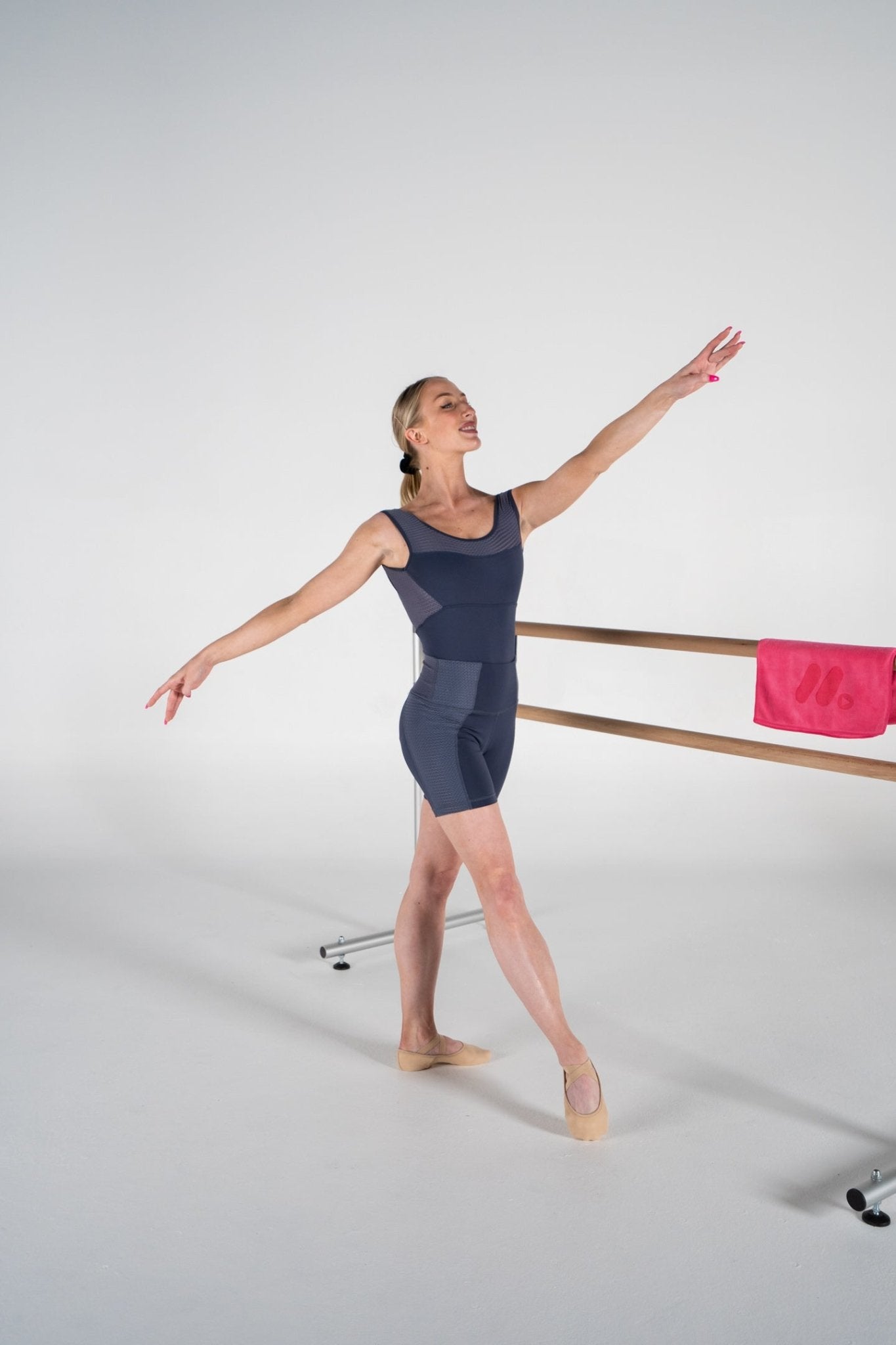Injury Prevention with Expert Dance Physiotherapist

Can I still dance if I’m injured?
It depends on the type of injury you have. It is possible to modify class for some injuries. A dance physio will help you determine what is safe to do. Sometimes you might omit jumps, releves, the height of an extension or pointe work, for example. Sometimes, you will need to rest completely. Always seek a professional opinion to be safe.
What can I do in class?
Often, teachers like their students to attend class and take notes, learn from watching their peers and hearing the corrections. If permitted, you can do your physio/ rehab exercises to the music and using the mirrors in the studio. Sometimes this is quite emotionally challenging for dancers- to sit and watch a class they wish they were doing. It is ok to feel that way, because it means you care about what you do! Don’t be afraid to talk with your teacher about scheduling rehab or cross training instead of class. If you’re going to have to rest for a long time, this is often kinder on your soul. You can feel like you’re using the time wisely to reach the goal of returning to dance.
In terms of doing actual class work, this depends on the injury. Sometimes, the recipe is no ballet and lots of rehab, sometimes it’s a matter of leaving out one or two things for a short time (like pointe work or jumping) whilst you rehab and completing the rest of class as usual. I like to work this out with the individual. There is no one size fits all.
What else can I do if I’m injured?
If you know you’re going to need a long time off, the best thing to do is make yourself a plan and write it down. As a dancer, you are probably used to managing your time around a tight schedule and it’s easy to feel lost because you aren’t dancing. Try to work with your teacher, physio, doctor (and maybe Mum and Dad) to set some goals and make a rehab timetable. Remember, it is only temporary!
Some examples of cross training I recommend when helping dancers stay fit whilst injured are swimming, stationary bike, walking, Pilates, abdominal and upper body strengthening (or lower limb strength if you have an upper body injury). It is really important you seek professional advice before cross training with an injury, so that you don’t make the injury worse!
Why do I keep getting the same injury?
Sometimes we experience the same (or similar injuries) over and over again. This could be due to a number of factors, but commonly I see dancers who are going through a rapid phase of growth become injured and the next time they grow the same injury returns. There are also areas where a dancers’ alignment or strength might not be as good, so unless we work on these areas to improve alignment and strength, injuries recur.
At what point to see the physio?
You could choose to see a physio before you are injured for a screening- I would recommend that. Write down some of the corrections you are given frequently in class and take them to your physio. Also make a note of any goal you have yourself. Once you have established a relationship with a physio and they are aware of your healthy normal, it is a lot easier for them to help you when you are injured.
In terms of seeing a physio when you are injured- I would say as soon as you have a niggle lasting 5-7 days, go for it. If nothing else, you’ll be reassured and learn something about your body. If you can’t weight bear or have pain that limits every day functions (like walking, sleeping) possibly sooner!!
When can I go back to dance?
Again, this depends on your injury. This is one of the reasons it helps to see a physio who understands how a ballet class progresses so they can make practical recommendations. I like to find out about goals my patients have (like an exam, performance or audition) and work backwards from there. Dance goals have to be realistic and safe, but I always try to help dancers plan ahead and focus on what can be achieved each week. Small progressions add up!
Why did you decide to be a dance physio?
I actually remember having a pre-pointe assessment with a physio in my home town who (upon reflection) probably specialised in gerontology (working with older adults). My Mum commented after that appointment that maybe I could be a physio one day. I don’t think I did my exercises as often as I should have. These were days before exercises could be filmed on a smart phone, so I had my Mum’s stick figures and random notes to follow. I chuckle about that now. I also try to make sure my patients know exactly what they need to do before they leave!
Whilst dancing full time I saw physios for a variety of reasons, and I liked to talk with them about what it was like to study physio. I was really interested in the ways different bodies adapted to ballet training and I was curious as to why some people had injuries others didn’t.
I focus a lot on what a dancer can do when injured- such as exercises, cross training, parts of class. I try to understand what a dancer might have access to for rehab and what they need to be ready for.
CD X



